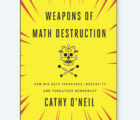
It’s been an interesting year. It began with several signed contracts as a result of requests for proposals (RFPs) released in 2018. By the time this issue sees print, the research associated with those contracts will likely have been posted online. Completing these publications represent the first time that I’ve observed the entire research process — from the beginning of an idea, development and approval, review and selection of research partners, reading of and commentary on interim drafts, and finally release to the public. It sounds like a lot of steps, and it is. Along the way, there is a steady cast of CAS volunteers and staff who lend their support and input.
I’ve been on the road a lot this year. In March, I was in Boston, where the CAS hosted its first-ever introductory Python workshop. Having been involved in many of the R workshops over the years, it was exciting to see us broaden the set of educational offerings, with the implication that CAS actuaries are continuing to expand their skill sets. Open-source languages like R and Python appear to be going mainstream amongst actuaries and I’m delighted about that. The benefits, in terms of reproducibility and a wider set of algorithms to draw on, are tremendous. Further, tools like R and Python (and Julia and Octave, etc.) allow the global actuarial community to develop its own tools. Looking for an implementation of the chain ladder reserving technique? You can find one on both R and Python.
May found me at the CAS Spring Meeting in New Orleans, where I learned of several significant items to research. There was a fabulous concurrent session about the changing nature of wildfire and what it means for our industry. There’s much work to be done here and I expect that CAS members and researchers will have more to say on this topic. Josh Newkirk, FCAS, and Ryan Ferguson, FCAS, of the Long-Term Pricing Analysis Working Party gave a presentation about their work to date. That session closed with a live, interactive pricing simulation which, while far from perfect, did manage to get people out of their seats and talking.
Also in New Orleans, Stephen Mildenhall and I gave a talk about the role of artificial intelligence (AI) in insurance. I think it’s nearly impossible to open an insurance-related publication that doesn’t talk about AI or deep learning. The typical headline runs quickly to breathless hyperbole, along the lines of, “AI Is The Only Thing About Insurance That Matters From Now On.” Mildenhall very effectively cut through the hype and, for the first time, I feel like I’m beginning to get it. Deep learning is computationally rich, but honestly, the mathematics are not crazy. Anyone who didn’t sleep through their linear algebra class should be able to follow it. There are definitely new elements at play. Among them are that (1) the algorithms are applied at tremendous scale, (2) we need to re-think how we structure input data and (3) there is a change in how we interpret the model results. The implications for the actuarial profession and the industry couldn’t possibly justify the hype, but I am convinced that we will see a lot of development here. I hope to push forward a number of research projects on those questions in the coming year.
Travel for the CAS also brought me in contact with many new faces. In February, at Florida State University, I spoke at a meeting of Gamma Iota Sigma, an academic fraternity for students interested in risk management and actuarial science. It’s always great to interact with the next generation of actuaries; the perspective has changed a lot since I first entered the field. This issue has more to say about Generation Z (see the cover story), but this Gen-X actuary thinks that we’ll need to stay on our toes to keep up with them.
I’m typing this from my hotel in Houston, where I’m attending the annual meeting of the International Association of Black Actuaries. I spent two hours yesterday with a group of students talking about R and SQL. I was pelted with questions that were astute, incisive and clear evidence that these students are eager to leave their mark on our industry. It was a blast!
In Florida, Texas and Philadelphia, I gave talks about data visualization. This is one of my favorite topics, which is why I was so excited that earlier this year we established the Data Visualization Working Party. We have a group of actuaries with many different perspectives (pun intended) on this subject. The topic is very broad, but we are wrangling it into shape as best we can. Data visualization is a fact of life for most actuaries, but I’m not sure that we think of it as formally as we do, say, statistical modeling. The reality is that — long before we get to non-data “stylistic” choices — there are many guiding principles that can speed human comprehension and enhance clarity. Put differently, the same amount of time that is spent in consideration of predictor variables in your model can be spent in deciding how to visually present them.
I am often asked about sources of “real” insurance data for research. I point to the Schedule P data set compiled by Glenn Meyers and Peng Shi as a fantastic resource for loss reserving analysis. You can access it on the CAS website, or via the R package called “raw.” Perhaps lesser known is the fact that the CAS — thanks to the tireless efforts of Rick Gorvett — does have a set of actual data from an insurance carrier. This is available to research committees for specific projects upon request. Although the data has been stripped of personally identifiable information and altered, it is still regarded as sensitive and will therefore only be available upon request and subject to a non-disclosure agreement. Nevertheless, it exists and has already been used by the Ratemaking Committee for a project that is expected to be published soon.
Be a Research Reviewer
We want to ensure that funded projects are of high quality and need volunteers to assess early drafts from our research partners. This is your opportunity to get access to leading-edge research before it is published and to pose questions and get answers from some of the brightest researchers in our field. If you are interested, please email Brian Fannin at bfannin@casact.org.













